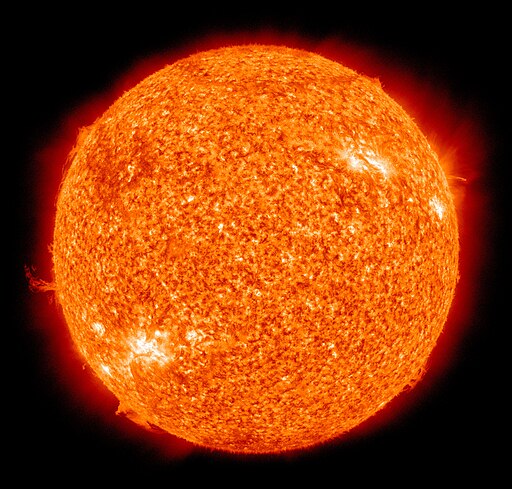3 10.1 Energy Basics
What is Energy?
Energy is the ability of a system to do work. When a system extends a force on another system over some distance, then the system has done work. Work transfers energy from one system to another. At least some of the energy is also transformed from one type to another during this process. One can keep track of how much energy transfers into or out of a system. If the energy goes in then it is an input, if it goes out, it is called output.
The energy available to do useful work decreases as it is transferred from system to system. This happens because energy is lost during transfers. But since energy is neither created nor destroyed, the “lost” energy is absorbed by the surroundings. It is lost but it is still around somewhere. Efficient systems minimize energy loss.
What are Earth’s natural energy sources?

Earth functions because energy flows. The major sources of energy on Earth are the sun, gravity, heat from radioactive isotopes, and Earth’s rotation. The flow of energy produces physical processes. Sunlight is a source external to Earth, while radioactive isotopes and gravitational potential, with the exception of tidal energy, are internal. Radioactive isotopes and gravity work together to produce geothermal energy beneath Earth’s surface. Earth’s rotation influences the global flow of air and water.
External sources of Energy
Much of Earth’s energy comes from our star, the sun. Nearly all life on Earth depends on solar energy. Plants use sunlight to make food through the process of photosynthesis and so do phytoplankton, who thrive in shallow parts of the sea. During photosynthesis, plants, algae, and cyanobacteria use the energy of the sunlight to make organic matter from carbon dioxide and water; they are called producers. By contrast, all the other organisms that obtain energy by feeding on others are the consumers. Energy flows through food webs in one direction, from producers to consumers and decomposers. The beginning of energy flow for all food webs starts with the producers! Photosynthesis has operated over more than 3 billion years and it truly sustains all life on this planet. But without continued input from the sun, the producers wouldn’t be able to do their job, threatening all life as we know it.
Fig 10.2 Left. The bright colors in the satellite image illuminate places rich in phyto and zooplankton. Phytoplankton (right) are micro-organisms that obtain their energy directly from the sun. The image shows a few of them seen through a microscope. Source: NASA
The sun is the primary source of energy for Earth’s climate system. For example, the sun warms both Earth’s surface and atmosphere in varying amounts. The differences create conventions that manifest in wind currents in the atmosphere and influence ocean currents around the globe.
Internal Sources of Energy
The sun is a powerful external source, but it is not the only one. Internal forces include radioactive energy and gravitational potential. Radioactive isotopes and gravity work together to produce geothermal energy beneath Earth’s surface. Earth’s rotation influences global flow of air and water (Eia).
Energy flows through Earth systems (hydrosphere, biosphere, lithosphere, atmosphere, see Ch.1). All the physical processes, ie., winds, currents, plate tectonics, the water cycle, the carbon, and nitrogen cycle, manifest energy flows. Energy flows have shifted significantly throughout Earth’s history. We know this because of geologic, fossil and ice records.
What is the difference between energy and power?
Power is a measure of the rate at which the energy is transferred (energy per time). For example, a joule is one of the units we use to quantify energy. One joule of energy transferred in one second is called a Watt (i.e., 1 joule/second = 1 Watt).
Humans are changing the energy flows and balances. We have tapped and effectively use powerful energy sources such as fossil fuels and nuclear energy. Fossil fuels, such as petroleum, carbon, and natural gas contain energy that micro-organisms and plants stored millions of years ago in the form of carbon, thus their name: hydrocarbons. Oil and natural gas are central to modern life in many different ways. However, the accelerated rate at which we are releasing hydrocarbons into the environment is unprecedented. Hydrocarbons took hundreds of thousands to millions of years to form. Most hydrocarbon reservoirs (70%) formed during the Mesozoic (252-66 million years ago). Why? Because of global geologic conditions! So, it took earth millions of years to cook that oil, gas, and organic matter but we are burning it in a matter of decades. Changes in the carbon cycle can push changes in other systems, with consequences for life that can be hard to fully grasp (recall the complex systems, covered in Ch. 1).
Fortunately, our energy source do not have to be limited to hydrocarbons. Other sources of energy include the sun, the wind, the tides, radioactive decay and gravity. Sounds familiar? Yes! If these forces drive our planet, doesn’t it make sense for us to invest in harnessing them?
In this chapter, we will study energy resources, their pros and cons, and describe a few interactions between energy choices and society.
Key Takeaways
- Energy is the ability to do work. Energy flows, it is transferred from one system to another.
- Energy flow through the earth systems produce physical processes on earth and support and enable biological processes
- The main sources of energy for the earth are the sun, radioactive decay, gravitational potential, and earth’s rotation
- Humans transfer and transform energy from the environment to power human activities. The primary source of energy for humans are fossil fuels and uranium.
Microscopic organisms that live in watery environments, both salty and fresh. Phytoplankton are photosynthetic organisms.



